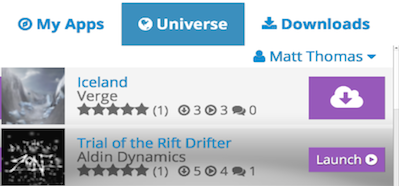Systemic Issues in Metaverse Implementations
PREFACE
This article is much longer than I would have liked, yet I wasn’t able to dive into each of the subtopics in as much detail as I would have hoped for. Still, it provides some foundational material for a later examination and proposal for a metaverse implementation. If you are a serious virtual world or metaverse enthusiast, this article is probably for you. The more casual reader may want to skip this article.
If you are involved in a metaverse project, you may find it referenced below. Nothing you read here should be considered a harsh criticism of any one particular approach. In most cases, these implementations are named to illustrate an example or a counter-example. This article doesn’t attempt to perform a complete review of platforms or to call winners.
INTRODUCTION
Previously, we identified seven issues which hold back our current metaverse implementations. Can a metaverse actually break through all of these issues to become a major platform?
What if we build on a distributed services architecture? Should we position the desktop client as a 2D/3D content browser? What if we use open standards, or build upon a proven engine? These and other suggestions may turn out to be very good ideas, but we don’t know. We’re still trying to understand the underlying issues which are holding us back.
SPECIFIC PROBLEMS ILLUSTRATE SYSTEMIC ISSUES
Clearly, there are more problems than the original seven which were provided in the first article, but those seven create a pool from which we can look for more systemic issues. Read More…
Travelling Between Unrelated Virtual Worlds
If this is your first time visiting Metaversing, please read:
This blog is about going beyond the science fiction descriptions of the Metaverse and actually fleshing out some of the concepts, designs, and details that are useful in bringing it to life. The ideas described here are not to be interpreted as the exclusive way for the Metaverse to be designed. We’re here to put a stake in the ground. We hope to start the conversation (where it doesn’t already exist) and to move the conversation forward.
How do you navigate between unrelated virtual worlds?
Back in August 2013 when I first envisioned how I wanted a different model of the Metaverse to work, one of the fundamental questions I had was in how to glue everything together. Instead of building one large Metaverse and splitting it into pieces, as has been done before, I looked at a different solution. How do we start with a bunch of unrelated pieces of software and combine them together to form a larger Metaverse?

Image Sources: VRChat, JanusVR, Anarchy Arcade, Minecraft (house by PoPlioP)
Our universe starts with completely different and unconnected virtual environments, games, and virtual worlds. There are different authors, languages, graphics libraries, and more. If you wanted to create a way for players (avatars) to actually move between them, how could it be done? How would you move from JanusVR to Minecraft? How do you walk from Minecraft into VRChat? Read More…
Today’s Glimpse into the Virtual Home
Earlier, I wrote about the concept of the Virtual Home as the center of your activities in virtual reality. It is personal space, lounge, hangout, and launching pad. There are a number of ways to handle the user interface for the Virtual Home.
We’re going to quickly look at VirtualReality.io, cover the concept for the Rift Navigator, and go back and pick up a great Virtual Home that I missed called Anarchy Arcade. After that, the conversation will switch gears to highlight a fundamental problem inside the Virtual Home (and virtual reality as a whole).
VirtualReality.io
VirtualReality.io is a no-nonsense launching pad for VR software. It doesn’t do a lot. It doesn’t have the personal space, lounge, or hangout. What it does do, though, it does correctly. They’ve got the launching pad covered for the novice user.
The user selects an application from a catalog of third party software and it installs it onto their system. When the user selects the installed program, the interface quickly moves out of the way, but returns when the application terminates. There is no need to remove a head-mounted display. At a basic level, a Virtual Home needs to behave similarly. Read More…
Griefing and the Metaverse
If you’ve been following some of the posts here on Metaversing, you may have noticed a slant towards planning and design issues. This isn’t by accident. Many issues seem innocent or almost trivial, but need to be carefully considered before jumping into an implementation. A well thought-out design can save countless hours of trouble down the road in the systems development life cycle.
Today, I have an easy prediction: the Metaverse is going to be the stuff of legends for hackers, griefers, trolls, vigilantes, security researchers, and spy agencies. If you’re already familiar with the scene at the top of this article, then you know what we’re looking at: an in-world denial of service attack. Do you see it? Is it the guy in the pool with the antlers on his head? No? To explain, let’s go back to design. Read More…




